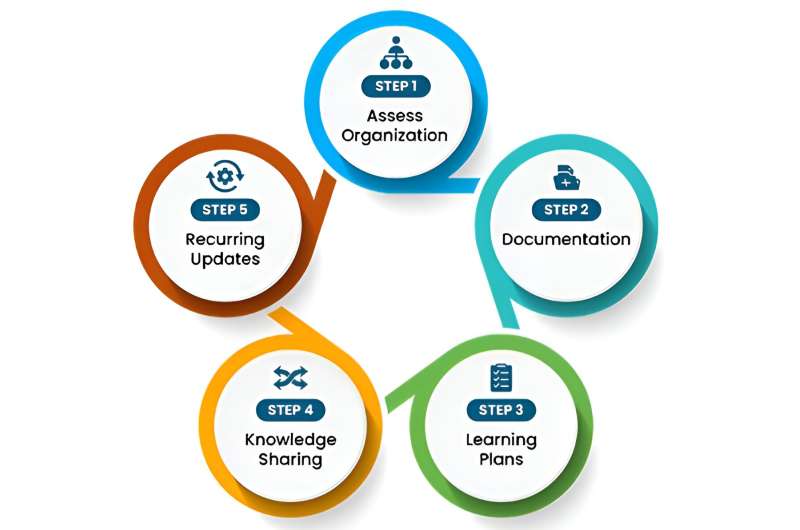
A new resource is equipping hydropower organizations with tools that can facilitate seamless succession planning and promote robust knowledge sharing practices.
The good news: Hydropower’s reliability means it plays—and will continue to play—an important role in the electrical grid, supporting variable renewable energy sources like solar and wind. And existing and new hydropower projects are expected to play a pivotal role as we transition to 100% clean energy in the electricity sector. That could mean substantial growth in the hydropower workforce.
The bad news: The hydropower industry’s workforce is experiencing major transitions, as it’s seeing an increasing number of workers retire. The industry now faces the difficult challenges of not only ensuring that it can recruit enough workers to fill all the necessary roles, but also minimizing organizational knowledge loss from worker departure.
This organizational knowledge loss can have major implications, such as lost productivity as new workers come up to speed on organizational practices or increased pressure on existing employees, which can cause dissatisfaction and potentially lead to additional worker turnover.
A new resource developed by the National Renewable Energy Laboratory (NREL) can help hydropower organizations prepare for worker turnover and reduce knowledge loss to ensure hydropower continues to play a major role in a clean energy future.
The Knowledge Sharing and Succession Planning Toolkit outlines a five-step process that can be used by any hydropower organization, no matter where they are in their workforce transition, to establish a system and culture for knowledge sharing.
“When we began this project, we realized that there are very minimal resources specific to hydropower regarding succession planning and knowledge sharing,” said Adam Kanter, workforce development researcher at NREL and the lead author on the toolkit. “But we can see that hydropower is one of the industries that needs this kind of help the most.”
To build the toolkit, Kanter spent months gathering expertise from other workforce development sources, then solicited feedback from members of hydropower associations and organizations.
“We had a good mix of perspectives—some technical hydropower people, but also human resources workers who already had some experience with knowledge sharing and succession planning,” Kanter said. “Their input really strengthened the toolkit.”
How to use the toolkit
The toolkit encompasses two important concepts necessary for successful workforce transitions: knowledge sharing, or the process of capturing skills and information and making that knowledge available to all employees; and succession planning, which helps leaders identify crucial positions within organizations and prepare employees to fill those vacancies as incumbents retire or move on.
These concepts are embedded in the toolkit’s step-by-step approach, which first shepherds organizations through assessing, documenting, capturing, and sharing existing knowledge. The tool then guides them in making necessary changes and drafting a plan to revisit each topic regularly.
Each of the five steps include downloadable tools, templates, and checklists that simplify the process of evaluating organizational knowledge sharing practices. Examples of completed worksheets are also included in each step, so the organization can see the types of information they should be gathering.
But the beauty of the toolkit is its flexibility, said Kanter.
“People can use it chronologically, from Step 1 to Step 5, or they can skip directly to building a job profile,” Kanter said. “One of the major considerations when we were creating this was making sure it’s useful to people regardless of where they might be in this process. If they’ve already assessed their organization, and just want to make sure they’re doing it right, they can use this to validate their ideas.”
The toolkit was made publicly available in April 2024, and it has already been shared with many hydropower industry partners, from which Kanter is continuing to seek feedback. “One of the big benefits of having the toolkit online is that we can continue to update it to fill gaps and respond to industry input,” Kanter said.
Hydropower industry partners will also be able to set up one-on-one sessions with Kanter to request assistance, get questions answered, or provide feedback.
“This toolkit comes at a time when hydropower organizations need help to ensure they have a qualified, knowledgeable workforce ready to help hydropower take its place in the clean energy transition,” Kanter said.
Citation:
A five-step plan to support smooth transitions in the hydropower workforce (2024, July 1)
retrieved 1 July 2024
from https://techxplore.com/news/2024-07-smooth-transitions-hydropower-workforce.html
This document is subject to copyright. Apart from any fair dealing for the purpose of private study or research, no
part may be reproduced without the written permission. The content is provided for information purposes only.




